In 2019, Samsung released the original Galaxy Fold, the first phone with a flexible display (not counting pretenders like the Royole Flexpai). And even though it had more than its fair share of flaws, you could see its potential. Over the next couple of years, Samsung refined its flagship foldable with things like IPX8 water resistance, a more durable design and native stylus support. More recently, however, the pace of innovation has started to slow as more iterative improvements and fewer major upgrades have come to fill out the spec sheet. It’s a similar situation on the new Galaxy Z Fold 5: While many of its upgrades including the brighter main screen are nice to have, they’re also kind of superfluous. Even the one big change for 2023 – Samsung’s new Flex hinge – doesn’t really change the way you use the device; it just makes it a bit thinner. When you consider that the price still sits at $1,800, it feels like Samsung’s Z Fold line – and possibly the category as a whole – is losing momentum.
Design and display
The Z Fold 5 was built on the same basic blueprint as its predecessors. It packs a skinny but tall exterior Cover Screen and opens up to reveal a big main display with a fingerprint sensor built into its power button. The major change this year is Samsung’s Flex hinge, which is based on a two-rail internal structure that’s not only smaller than before, but also eliminates the gap between the phone when closed.
Samsung
Samsung Galaxy Z Fold 5
Pros
- New Flex Hinge
- No more gap
- Improved performance
- Additional multitasking gestures
- Great battery life
- Brighter main screen
Cons
- Very expensive
- S Pen comes separately
- Unchanged cameras
- Still rather bulky
This is something Z Fold users have been requesting since the original. In addition to slimming the phone down to just 13.4mm, losing that gap also reduces the chance that dust or rocks can get inside and ruin that fancy flexible screen. But that’s not all. Samsung says its Flex hinge creates a new waterdrop-shaped crease that puts less stress on the display, which is good for long-term durability. It also helps keep the factory-installed screen protector in place, which was an issue on previous models.
The new hinge also makes the device more pleasant to use and hold. The thinner hinge fits better in your hand when the phone is closed and it opens more smoothly, too. I just wish it hadn’t taken five generations to get here. Meanwhile, Samsung managed to increase the brightness of the main display to 1,750 nits, which is the same as the S23 Ultra and brighter than the Pixel Fold (1,450 nits). So while the flexible display on Google’s foldable is good, the Z Fold 5’s is better. It’s the perfect size and orientation for reading ebooks or browsing comics, and I’d argue that Samsung’s flagship foldable is the best device for playing Marvel Snap. You can still use a stylus to draw or take notes and the Z Fold 5’s new S Pen is 40 percent thinner than before. But since there’s still no room inside the phone to stash it when it’s not in use, you’ll probably want to pair it with one of Samsung’s new Slim S Pen cases.
Performance and multitasking
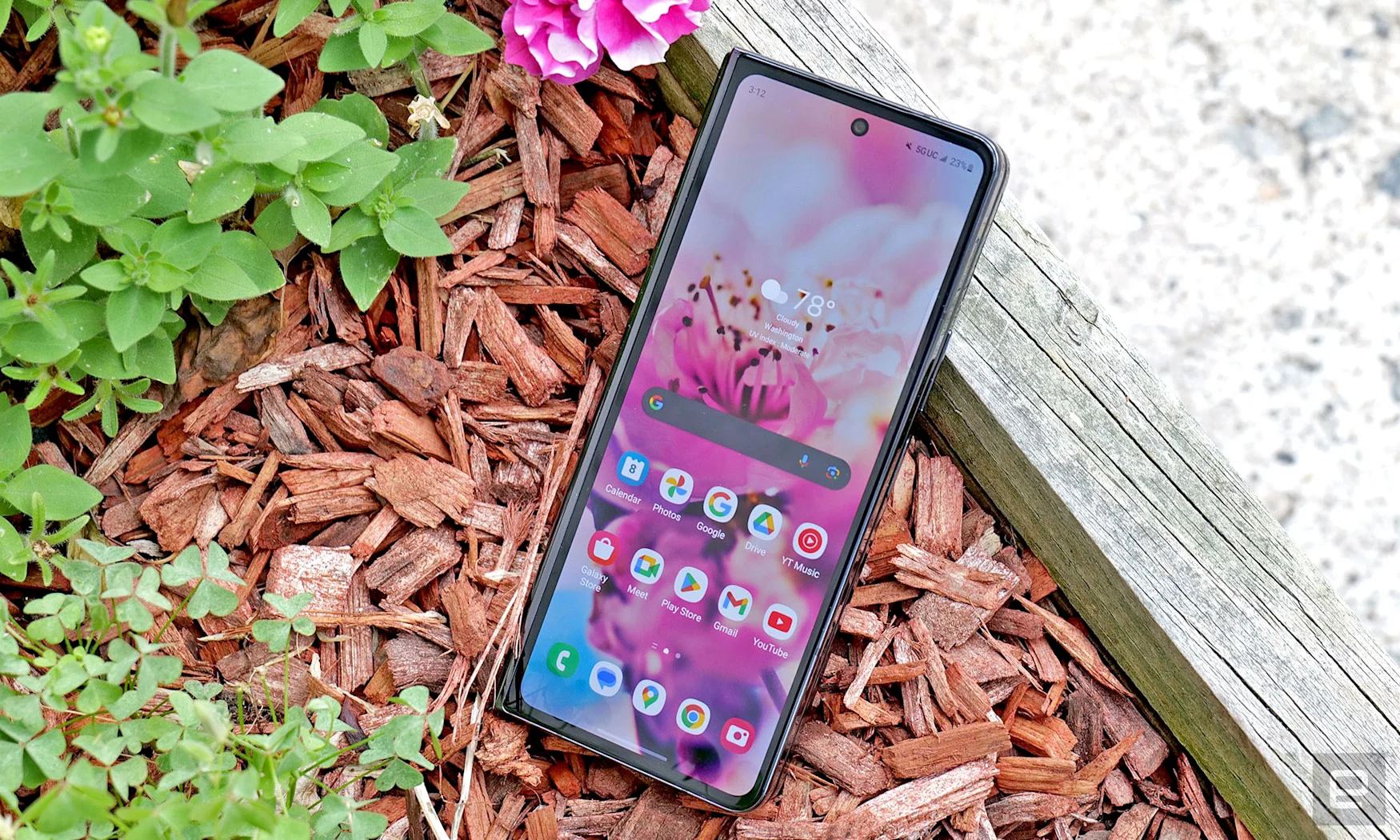
Photo by Sam Rutherford/Engadget
Last year’s model was far from slow, but thanks to a new Qualcomm Snapdragon 8 Gen 2 for Galaxy chip, the Z Fold 5 is now even faster. In traditional benchmarks, it posted notably higher multicore scores in Geekbench 6 than the Pixel Fold (5,362 vs 3,226). The Z Fold 5 feels incredibly responsive and in games, graphics and animations are downright silky. That means if you’re the kind of power user who demands an abundance of speed regardless of what you’re doing, the Z Fold 5 is the better pick over the Pixel Fold, whose Tensor G2 chip reserves more horsepower for AI tasks.
Samsung has also enhanced mobile productivity in three ways. To make it faster and easier to launch into side-by-side app mode, a new gesture lets you swipe in from the side of the screen with two fingers to instantly switch into dual-pane mode. Alternatively, if you want to turn a full-screen app to a windowed one, just swipe diagonally down from one of the top two corners. Both gestures are super handy and they’re a breeze to use. But they’re not on by default, so remember to activate them in the Advanced features tab in settings.
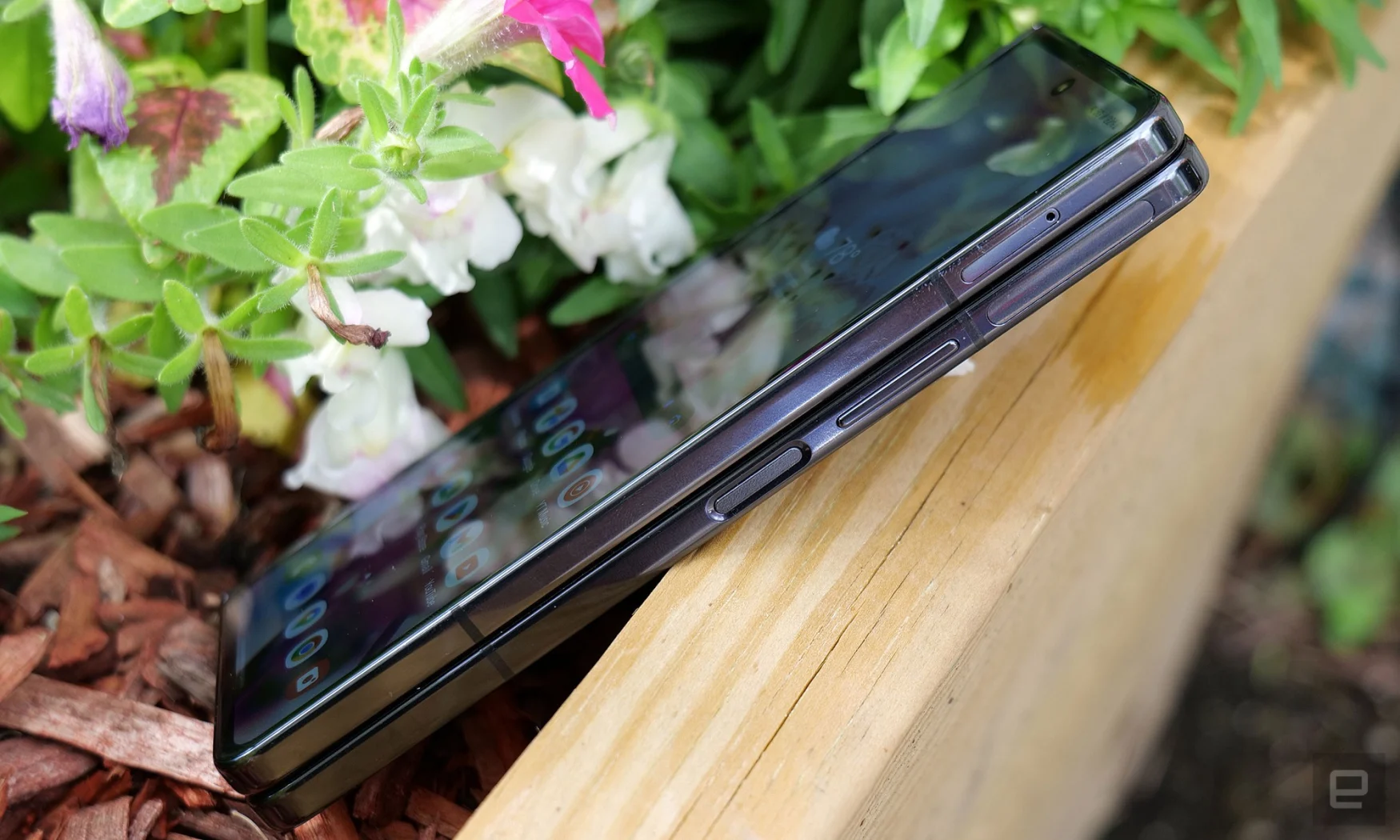
Photo by Sam Rutherford/Engadget
The other update is that the Z Fold 5’s taskbar can now show up to four recent apps instead of two. It’s a simple but straightforward change that takes better advantage of the width of the Z Fold 5’s big main display. My only gripe is that the expanded taskbar and the added gestures are software updates, so we didn’t need a brand new device to get them. That said, compared to the Pixel Fold, which takes a more streamlined approach to multitasking, Samsung’s desktop-like taskbar remains the best for anyone who wants to use their phone like a PC. And don’t forget that Samsung’s handy Dex mode is still around, too.
Cameras
The Z Fold 5 has the same imaging setup as its predecessor: a 50-megapixel main camera, a 12MP ultra-wide and a 10MP telephoto with a 3x optical zoom in the back, plus a 10MP selfie shooter and a 4MP camera beneath the main display. In a vacuum, they’re more than capable of taking a good picture in practically any environment. However, when you consider that the S23 Ultra costs $600 less and comes with a 200MP main sensor and a 10x optical zoom lens, that puts Samsung’s most expensive phone in a weird position.
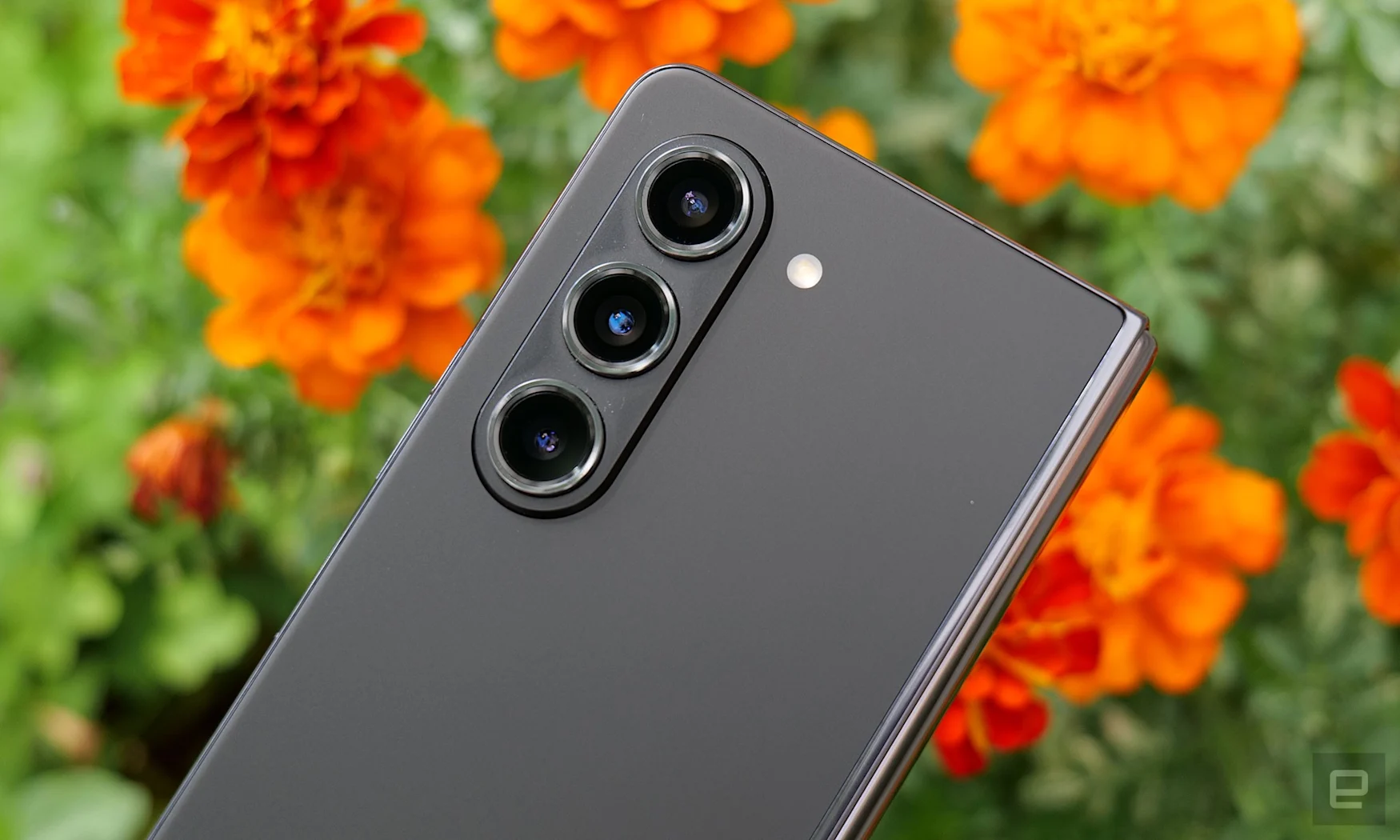
Sam Rutherford/Engadget
What makes things even more awkward is that the Pixel Fold sports a longer zoom (5x vs 3x) and better overall image processing. In my testing, that made the Pixel the more adept shooter across a variety of conditions.
In bright light, the Z Fold 5 captured images with Samsung’s typical rich, saturated color profile. The downside is this sometimes results in a small loss of detail, occasional blown-out highlights and slightly less accurate hues. Meanwhile in low light, Samsung’s Night Mode does a good job of improving exposure without a ton of side effects. That said, thanks to Google’s Night Sight, photos from the Pixel Fold are often just a touch brighter and sharper. A good example is a shot I took of some flowers at night, in which the Z Fold 5’s picture boasts more vivid colors while missing some of the finer texture on the petals.
Gallery: Samsung Galaxy Z Fold 5 camera samples | 9 Photos
Gallery: Samsung Galaxy Z Fold 5 camera samples | 9 Photos
Battery life
Despite having a smaller battery than the Pixel Fold (4,400 mAh vs 4,800 mAh), the Z Fold 5 lasts longer. In our video rundown test, Samsung’s phone lasted 19 hours and 48 minutes when using its main display and an impressive 23:10 with its Cover Screen. On both counts, that’s better than Pixel Fold, which posted a time of 15:22 with its internal screen and 22:21 with its exterior panel.
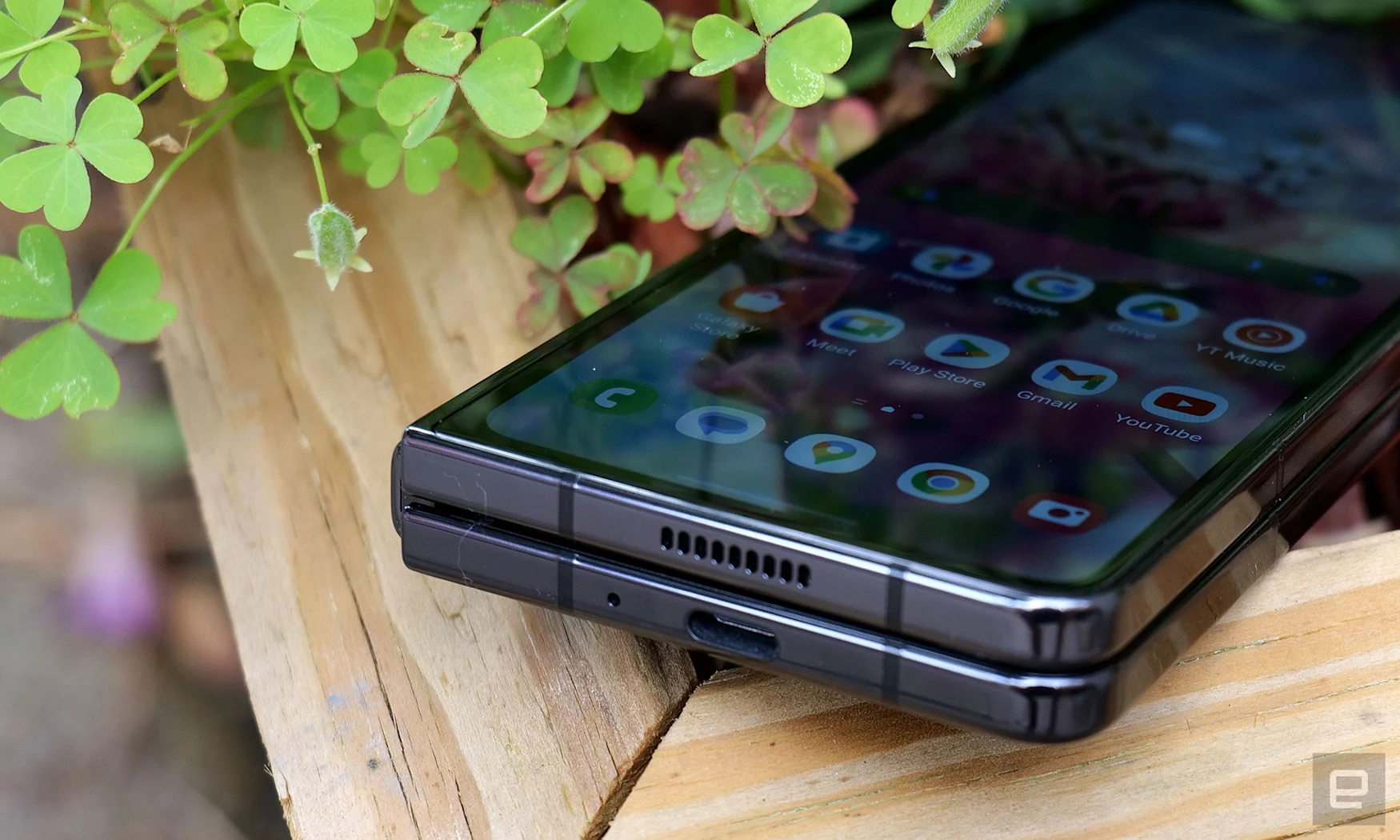
Photo by Sam Rutherford/Engadget
The Z Fold 5’s charging speed has stayed the same with 25-watt wired charging, 15-watt wireless charging and 5-watt power sharing (aka reverse wireless charging). That’s serviceable, but once again, the less expensive S23 Ultra can do better, with the ability to go up to 45 watts when plugged in.
Wrap-up
As someone who’s still optimistic about foldable devices and has owned the last three generations of Samsung’s flagship flexible phone, I can’t help but like the Z Fold 5. It’s faster and sleeker, with a brighter main display and even longer battery life than before. The question I wrestle with is how many tweaks and updates should we really expect from a device now in its fifth generation.
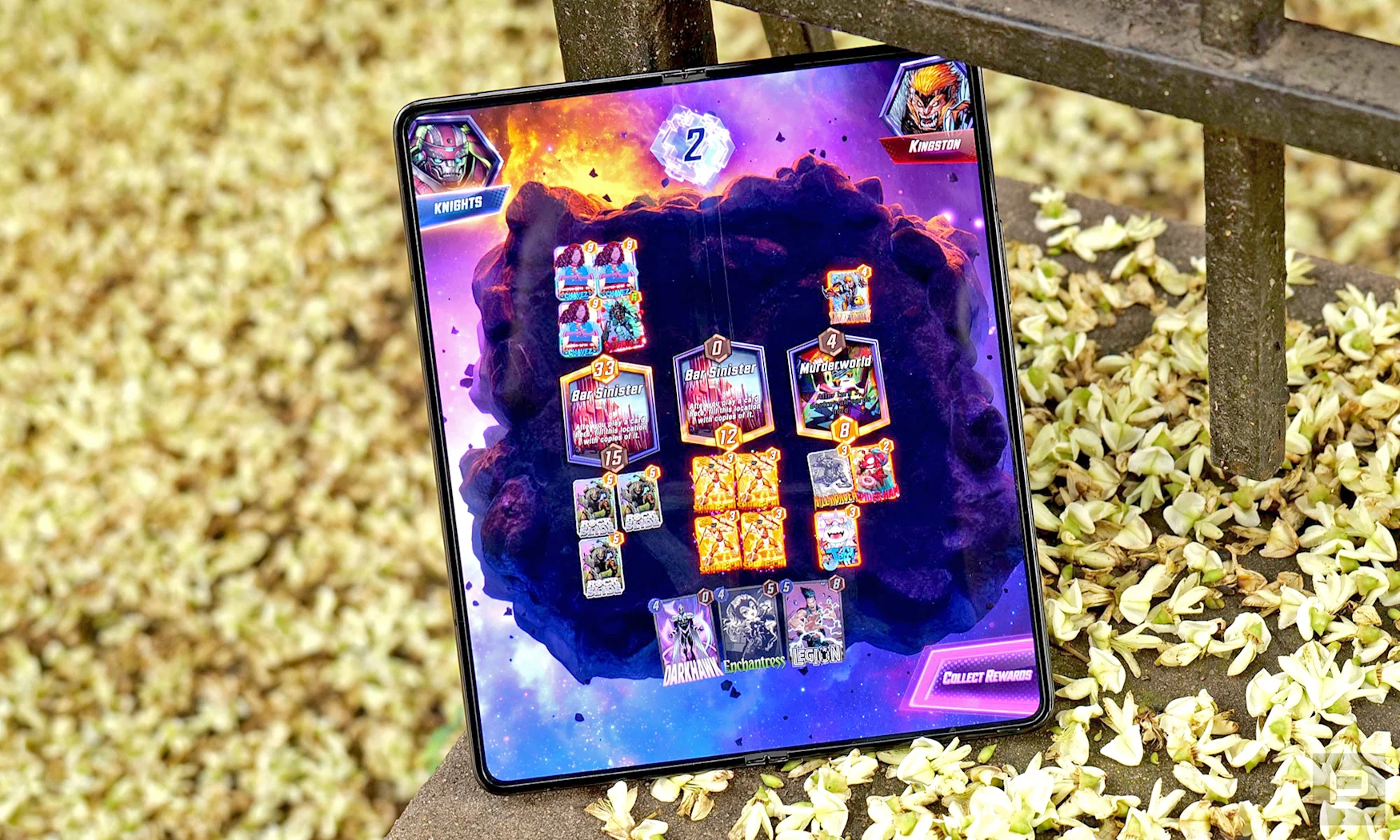
Photo by Sam Rutherford/Engadget
The Z Fold 5 has matured a lot since that initial concept device came out back in 2019, and Samsung’s new Flex Hinge is an important milestone that people like me have been waiting for. But in the end, there’s not a ton the phone can do now that it couldn’t before. It’s just a bit leaner, as if the old model spent the last 12 months in the gym. And with a price that’s still extremely high, I don’t think the Z Fold 5 is doing enough to woo anyone who’s not already sold on foldables.
Trending Products

Cooler Master MasterBox Q300L Micro-ATX Tower with Magnetic Design Dust Filter, Transparent Acrylic Side Panel…

ASUS TUF Gaming GT301 ZAKU II Edition ATX mid-Tower Compact case with Tempered Glass Side Panel, Honeycomb Front Panel…

ASUS TUF Gaming GT501 Mid-Tower Computer Case for up to EATX Motherboards with USB 3.0 Front Panel Cases GT501/GRY/WITH…

be quiet! Pure Base 500DX Black, Mid Tower ATX case, ARGB, 3 pre-installed Pure Wings 2, BGW37, tempered glass window

ASUS ROG Strix Helios GX601 White Edition RGB Mid-Tower Computer Case for ATX/EATX Motherboards with tempered glass…










